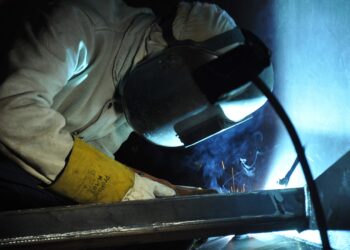A massive fire broke out in the early hours of August 2, 2025, at the Cugir Mechanical Plant in Romania, one of the country’s key state-owned arms factories and part of the ROMARM defense conglomerate. The fire erupted around 1:00 AM in a warehouse storing a significant stockpile of 14.5 mm ammunition, with an estimated total of approximately 400,000 cartridges. The ammunition was reportedly prepared for delivery and valued at nearly five million euros. Romanian media have reported that at least 130,000 rounds were completely destroyed in the fire, while the remaining stock is presumed to be unusable due to heat and smoke exposure.
No injuries were reported, as no employees were present inside the facility when the fire started. However, the incident triggered a major emergency response involving fire brigades from several counties—Alba, Hunedoara, Mureș, and Brașov. The blaze was particularly difficult to control due to the ammunition stored inside and the risk of explosions. Firefighters were unable to enter the structure directly and had to rely on specialized robotic equipment to contain the flames. The operation lasted approximately six hours and involved more than 70 emergency responders.
In the aftermath, Romanian authorities opened a criminal investigation into the incident. The case is being handled by the Prosecutor’s Office attached to the Alba Iulia Court of Appeal, with forensic experts from the National Institute of Criminalistics and specialists from the Romanian Police taking part in the inquiry. Investigators are analyzing surveillance footage, collecting physical evidence, and interviewing plant personnel in an effort to determine the origin of the fire. While no official cause has yet been confirmed, the possibility of deliberate sabotage has not been ruled out.
Romania’s Minister of Economy, Digitalization, Entrepreneurship, and Tourism, Radu Miruță, visited the site on the same day and addressed the incident publicly. He acknowledged that all potential causes, including technical malfunction, negligence, or intentional arson, are under consideration. Emphasizing the seriousness of the matter, the minister stated that he would show „not a speck of mercy” in seeking the truth and expressed confidence that investigators would clarify the circumstances. He also indicated that while early estimates place direct financial losses at around 400,000 euros, the overall cost, including the damaged ammunition, could rise to several million euros.
Despite the extent of the damage, Minister Miruță reassured the public and Romania’s defense partners that the factory’s operations would continue without significant disruption. He emphasized that the plant would still be able to fulfill its contractual obligations, both domestic and international, and praised the swift and professional response of the emergency services, who he said helped prevent a potentially catastrophic escalation.
The fire has attracted widespread attention in Romania and beyond, not only due to the economic damage but also because of the sensitive nature of the site. The Cugir Mechanical Plant is one of Romania’s oldest and most important defense facilities, with a history dating back to the 18th century. Today, it manufactures weapons and ammunition compatible with NATO standards and plays a key role in regional defense production. Given current geopolitical tensions in Eastern Europe, speculation has emerged—especially online—regarding the possibility of foreign sabotage. While unconfirmed, some voices have pointed to patterns of recent incidents across Europe that raise concerns about the vulnerability of defense infrastructure.
As the investigation continues, Romanian authorities remain cautious, focusing on collecting evidence before drawing conclusions. The final outcome will depend on forensic analyses and the work of prosecutors, who are under pressure to provide clear answers. For now, the fire at Cugir remains a serious incident with potential implications for national security, supply chains, and the safety of critical military production sites within the NATO area.






